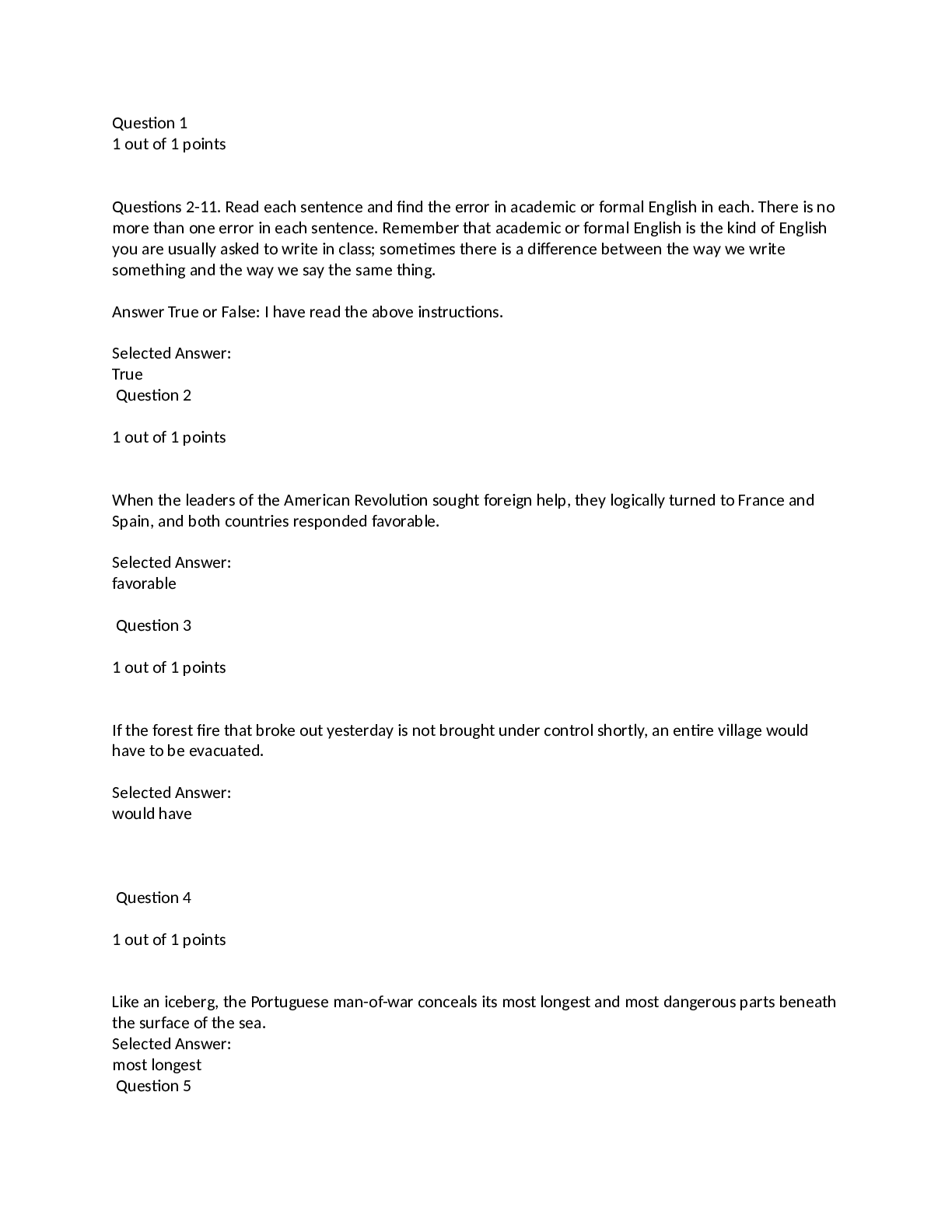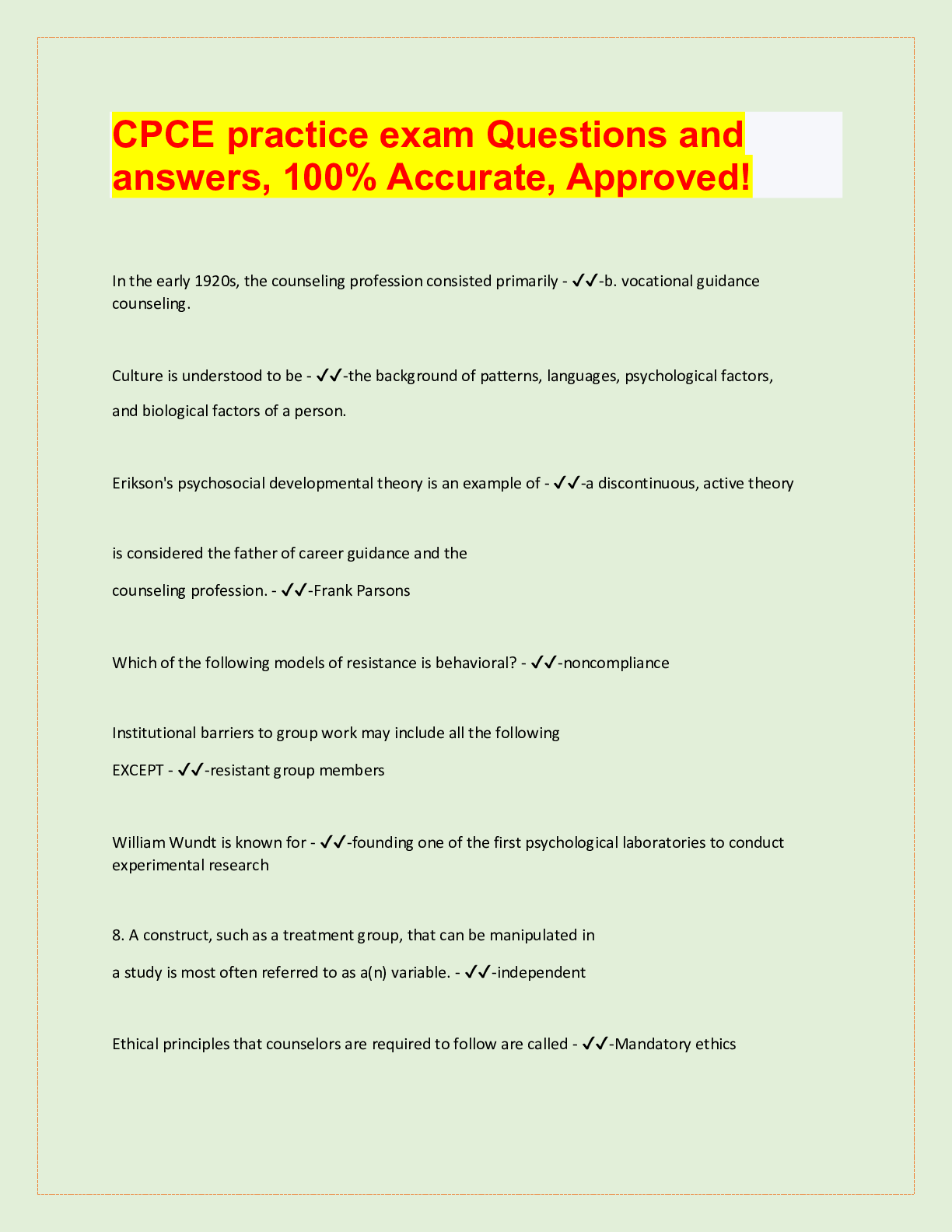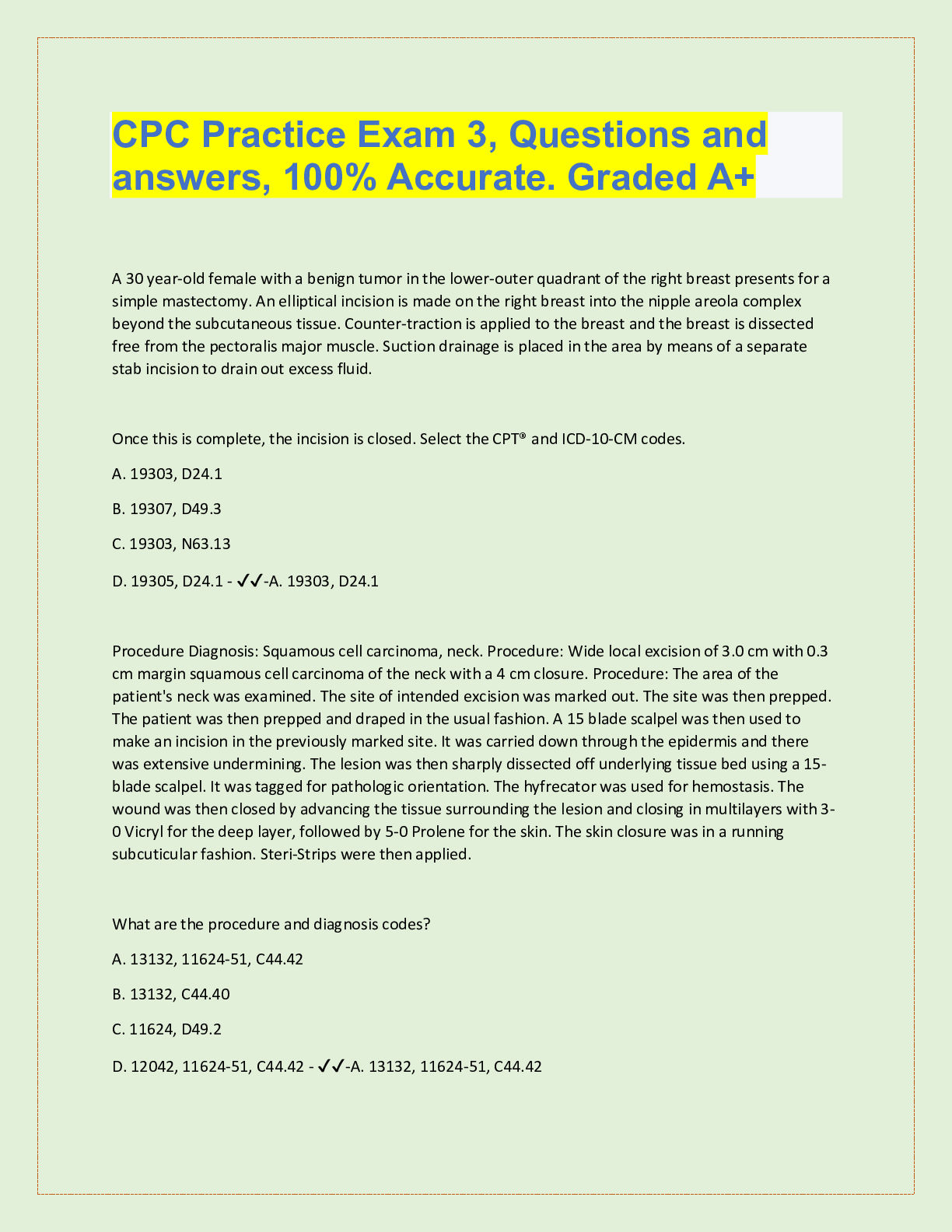Philosophy > QUESTIONS & ANSWERS > Ashford University PHI 103 Week 1 Quiz Latest Updated Score 100% (All)
Ashford University PHI 103 Week 1 Quiz Latest Updated Score 100%
Document Content and Description Below
1. Question : According to Chapter 1, philosophy is __________. Student Answer: focused on clarifying ideas equivalent to logic something that does not analyze emotions something that not everyon... e can do Instructor Explanation: The answer can be found in Section 1.6, “Logic and Philosophy,” of With Good Reason: A Guide to Critical Thinking. Points Received: 1 of 1 Comments: Question 2 . Question : Is the following an argument or an explanation? John will probably come to the party. He is not busy tonight, and he told me he was coming. Student Answer: Argument None of these Explanation Both of these Instructor Explanation: The answer to this question can be found in the document “Arguments versus Explanations.” Points Received: 1 of 1 Comments: Question 3 . Question : Rhetorical arguments focus on __________. Student Answer: persuading the audience to which one is speaking outlining in mathematical form the premises and conclusions of an argument creating a dialogue between arguing parties arguments related to morality Instructor Explanation: The answer can be found in Section 1.4, “Arguments Outside of Logic,” of With Good Reason: A Guide to Critical Thinking. Points Received: 1 of 1 Comments: Question 4 . Question : The authors of this text claim that logic is __________. Student Answer: a human attribute that can be learned something that began in England something that only exists in certain parts of the world a human invention Instructor Explanation: The answer can be found in Section 1.2, “Three Misconceptions About Logic,” of With Good Reason: A Guide to Critical Thinking. Points Received: 0 of 1 Comments: Question 5 . Question : Standard form is __________. Student Answer: a way to make logical arguments look mathematical in structure a confusing use of language the proper use of grammar in presenting an argument a way to clarify arguments by listing the premises above the conclusion Instructor Explanation: The answer to this question can be found in Section 2.1, “Arguments in Logic,” of With Good Reason: A Guide to Critical Thinking. Points Received: 1 of 1 Comments: Question 6 . Question : Which of the following is not one of the reasons given by the authors that language is important? Student Answer: It helps to prove our intellectual superiority. It can make a difference in our lives if we use it in its optimal form. It is the best means for expressing our thoughts and clarifying ideas. It can improve our sensory abilities like taste. Instructor Explanation: The answer can be found in Section 1.5, “The Importance of Language in Logic,” of With Good Reason: A Guide to Critical Thinking. Points Received: 1 of 1 Comments: Question 7 . Question : This perspective critiques logic by claiming that logic is an invention of humanity. Student Answer: Deontological Postmodern Modern Intellectual Instructor Explanation: The answer can be found in Section 1.2, “Three Misconceptions About Logic,” of With Good Reason: A Guide to Critical Thinking. Points Received: 1 of 1 Comments: Question 8 . Question : The conclusion of an argument is __________. Student Answer: the point in time at which the argument ends a sentence that gives a reason why something is true the claim that is supported by the argument a way to wrap up an argument without hostility Instructor Explanation: The answer to this question can be found in Section 2.1, “Arguments in Logic,” of With Good Reason: A Guide to Critical Thinking. Points Received: 0 of 1 Comments: Question 9 . Question : Which of the following is the definition of logic employed by the book With Good Reason: A Guide to Critical Thinking? Student Answer: A study of persuasion The study of arguments The study of arguments as tools for arriving at warranted judgments The study of how to make critical thinking a part of your life Instructor Explanation: The answer can be found in Section 1.3, “What Is Logic?” of With Good Reason: A Guide to Critical Thinking. Points Received: 1 of 1 Comments: Question 10 . Question : Reasons given to support a conclusion are called __________. Student Answer: commands premises pretenses prehensile Instructor Explanation: The answer can be found in Section 2.2, “Putting Arguments in the Standard Form,” of With Good Reason: A Guide to Critical Thinking. Points Received: 1 of 1 Comments: Question 11.Question : The word “because” is __________. Student Answer: an premise indicator a conjunction a bad word to use if you want to make your argument clear not a good word to start a sentence Instructor Explanation: The answer to this question can be found in Section 2.2, “Extracting Arguments in the Standard Form,” of With Good Reason: A Guide to Critical Thinking. Points Received: 1 of 1 Comments: Question 12 . Question : Which of the following is likely to indicate a conclusion? Student Answer: Assuming that Provided that Given that It follows that Instructor Explanation: The answer can be found in Section 2.2, “Putting Arguments in the Standard Form,” of With Good Reason: A Guide to Critical Thinking. Points Received: 1 of 1 Comments: Question 13 . Question : This philosopher was the first to formulate the principles of logic. Student Answer: Aristotle Pythagoras Plato Thales Instructor Explanation: The answer can be found in Section 1.2, “Three Misconceptions About Logic,” of With Good Reason: A Guide to Critical Thinking. Points Received: 1 of 1 Comments: Question 14 . Question : What is the conclusion in the following argument? We ought to allow people to own guns. My dad and grandma have guns. My political science professor believes that citizens should be able to have guns, and areas with high gun ownership show 20% less violent criminal activity. Student Answer: My political science professor believes that citizens should be able to have guns. We ought to allow people to own guns. Areas with high gun ownership show 20% less violent criminal activity. My dad has a gun, and my grandma has one too. Instructor Explanation: The answer can be found in Section 2.2, “Putting Arguments in the Standard Form,” of With Good Reason: A Guide to Critical Thinking. Points Received: 1 of 1 Comments: Question 15 . Question : Critical thinkers use the following method when examining things. Student Answer: They examine the sources of information and the credibility of the authors. They accept things that are presented to them from people whom they trust and love. They do not take into account strong evidence. They follow where emotions lead them when thinking. Instructor Explanation: The answer can be found in Section 1.1, “What Is Critical Thinking?” of With Good Reason: A Guide to Critical Thinking. Points Received: 1 of 1 Comments: Question 16 . Question : When people are engaged in analytical thinking, they are __________. Student Answer: breaking down component parts of larger things or ideas reporting something that they have seen to others using their [Show More]
Last updated: 1 year ago
Preview 1 out of 17 pages
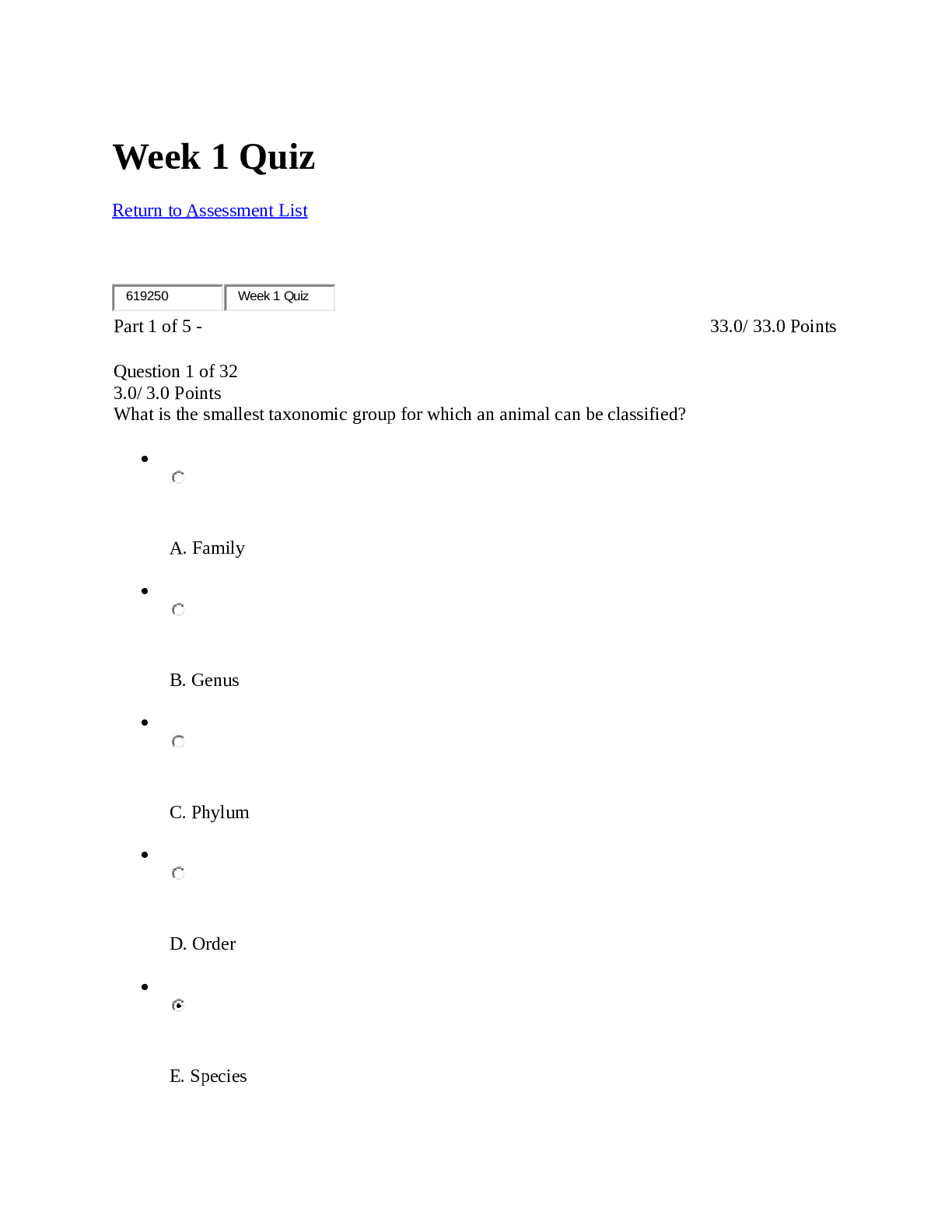
Reviews( 0 )
Document information
Connected school, study & course
About the document
Uploaded On
Apr 28, 2022
Number of pages
17
Written in
Additional information
This document has been written for:
Uploaded
Apr 28, 2022
Downloads
0
Views
95

.png)
.png)
.png)
.png)
.png)
.png)


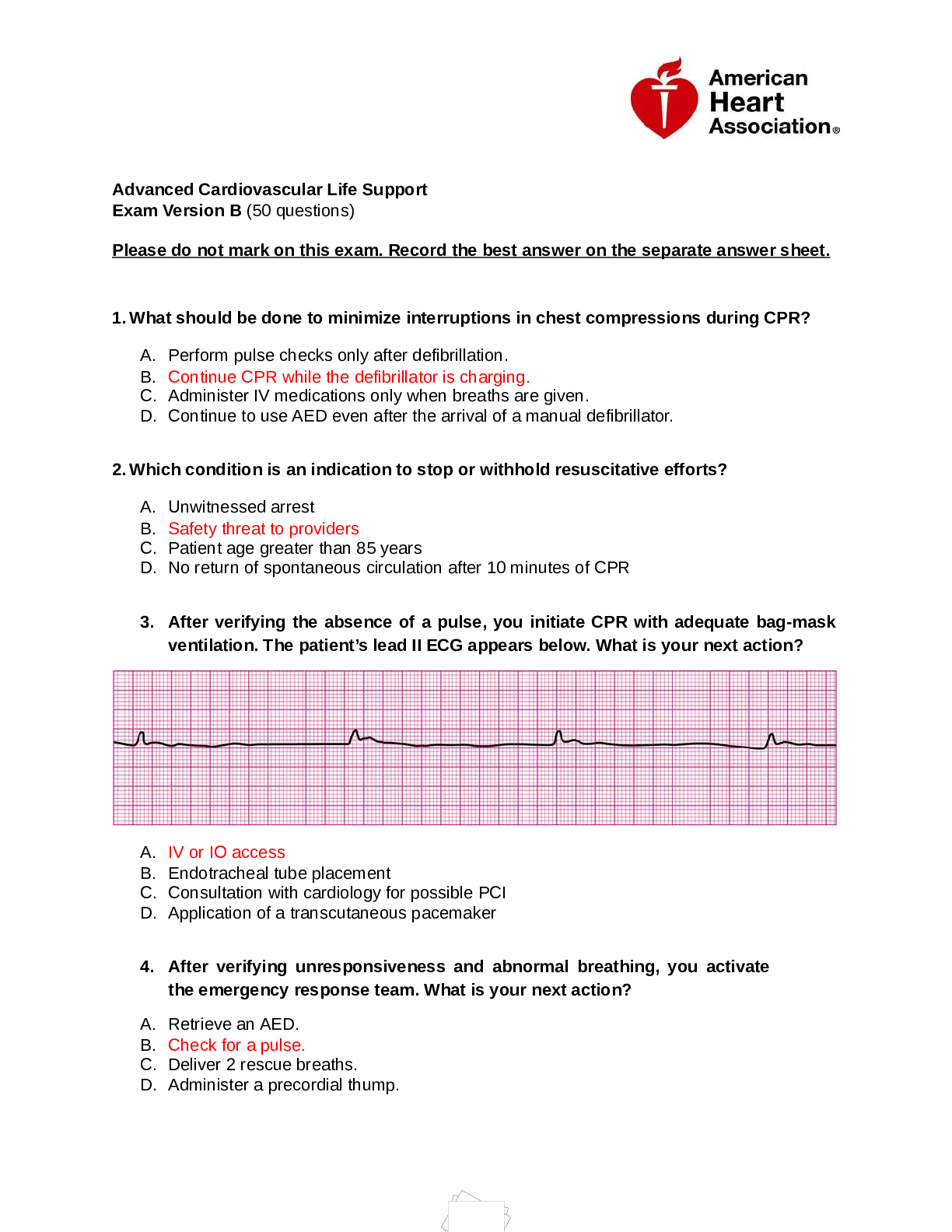
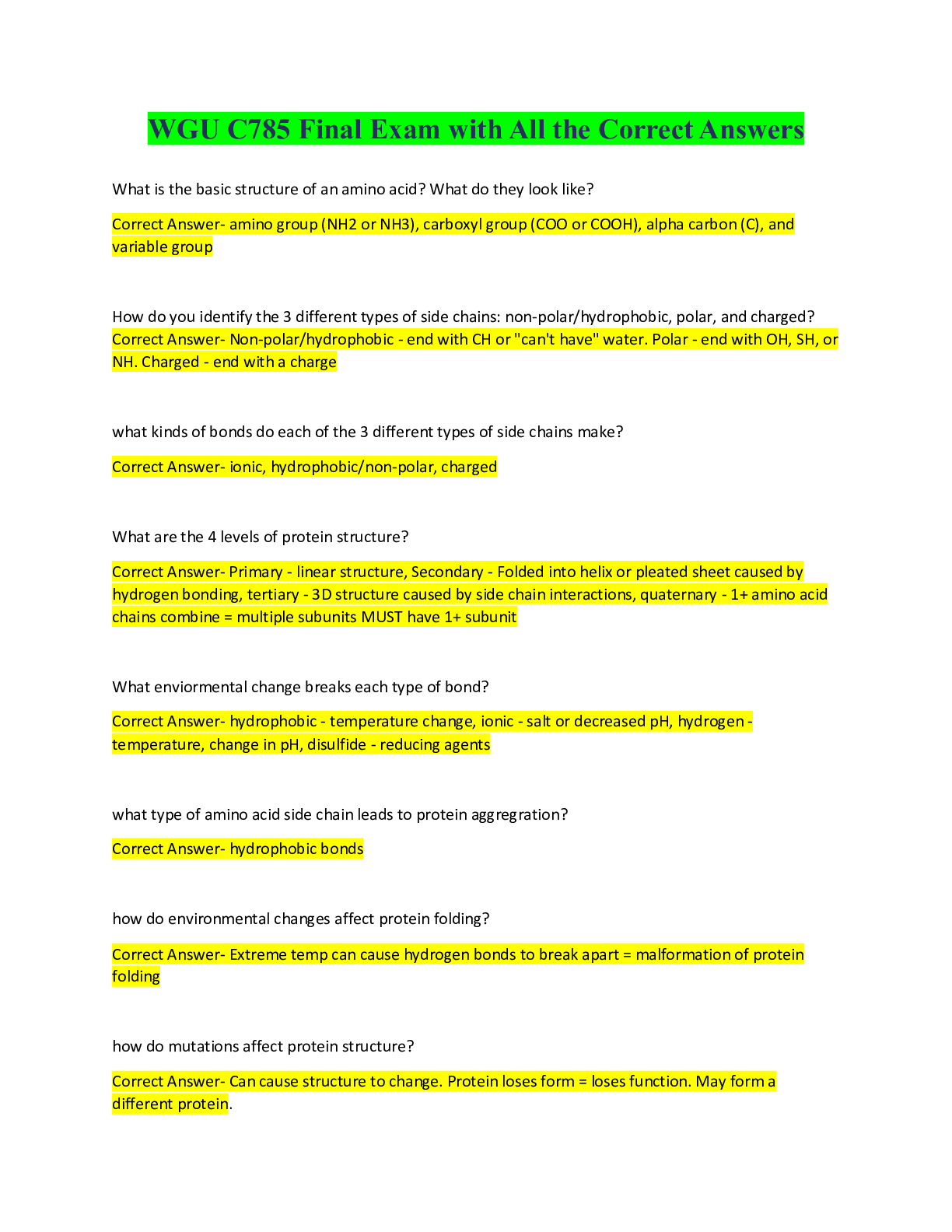
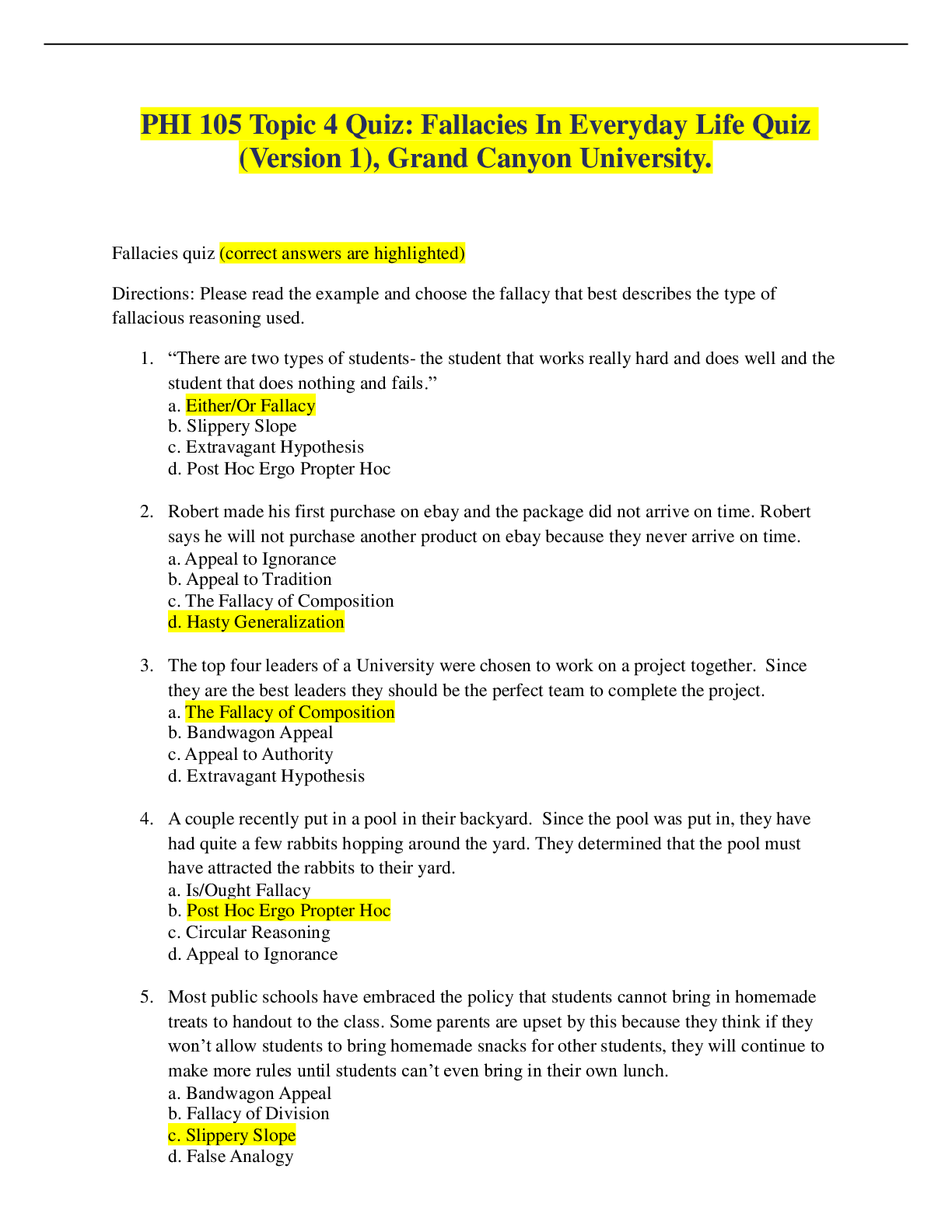
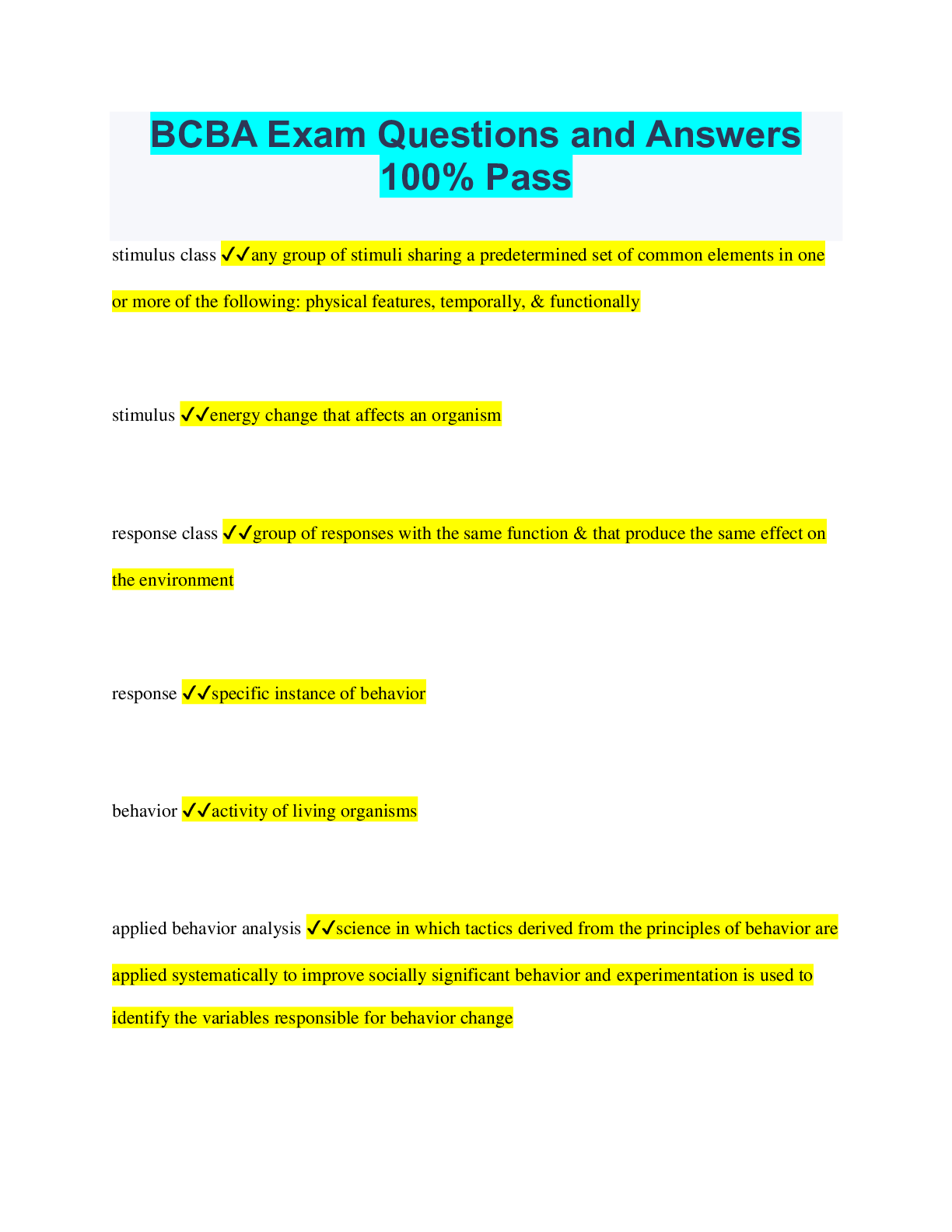
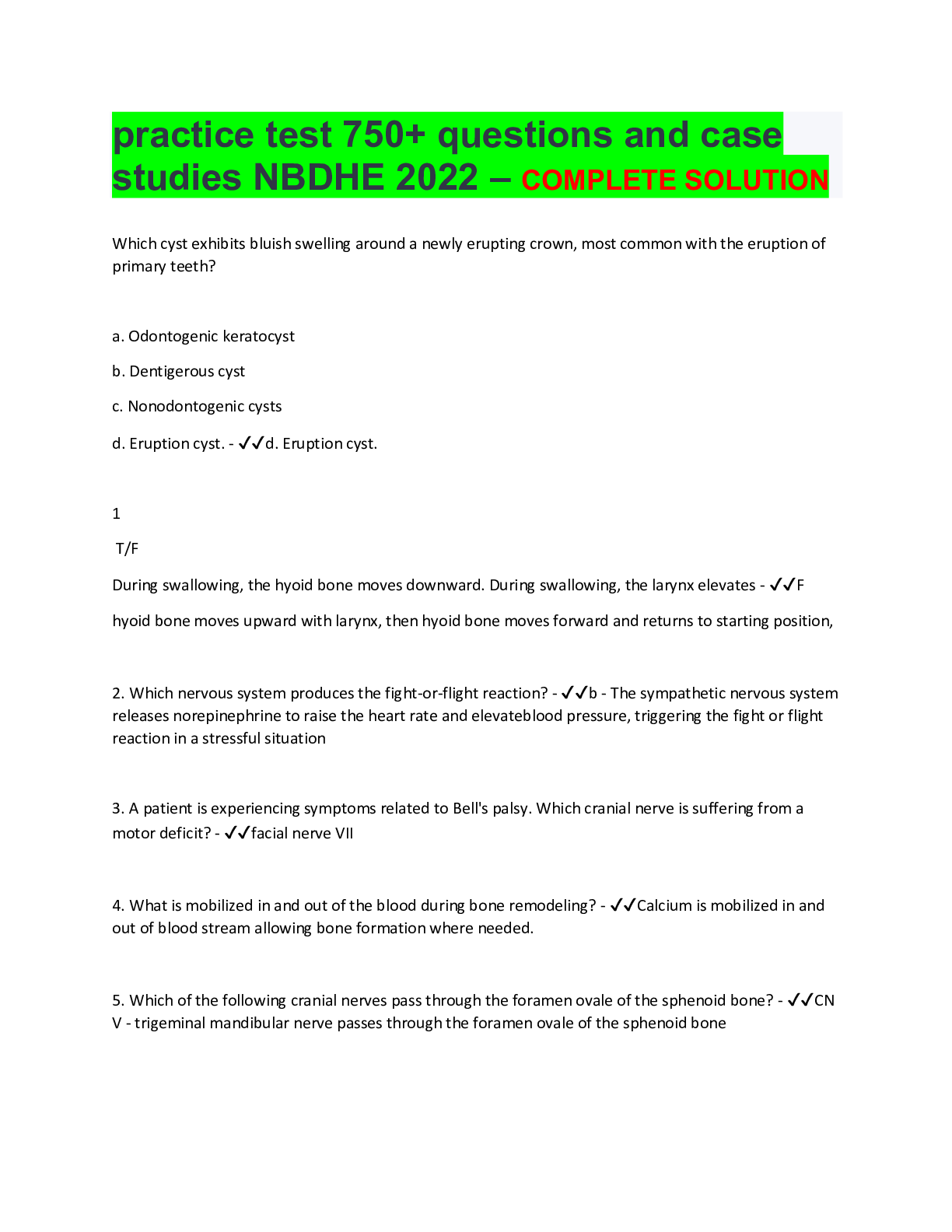
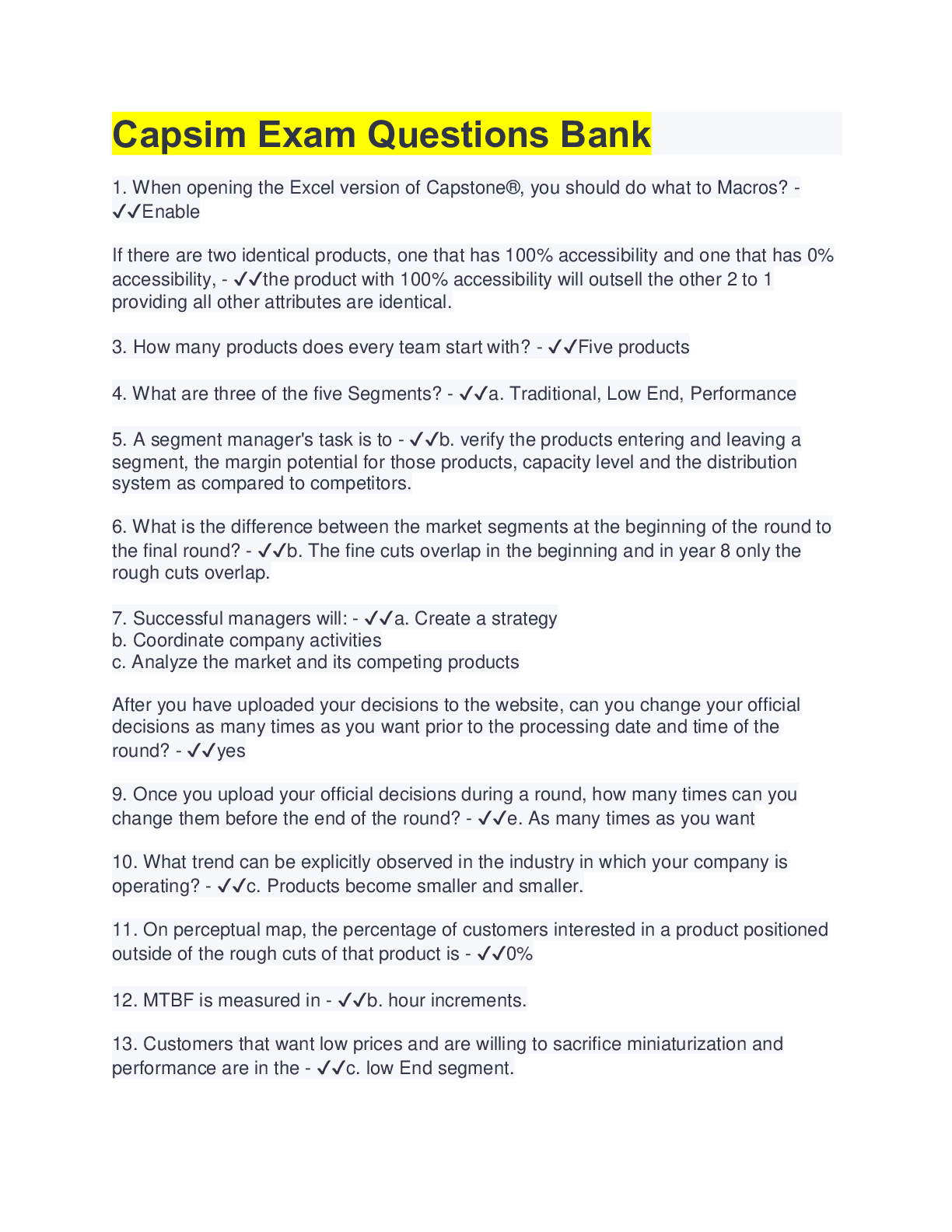
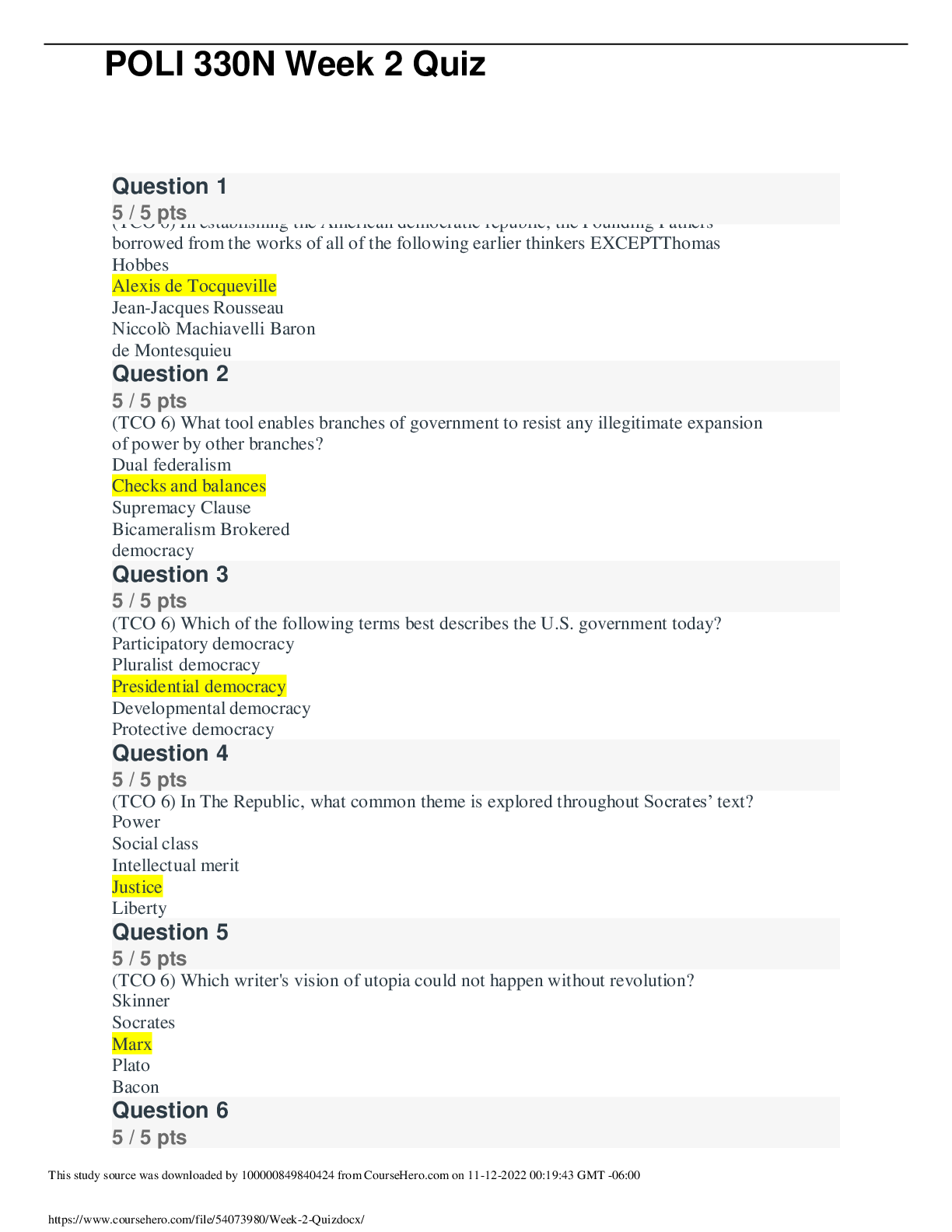
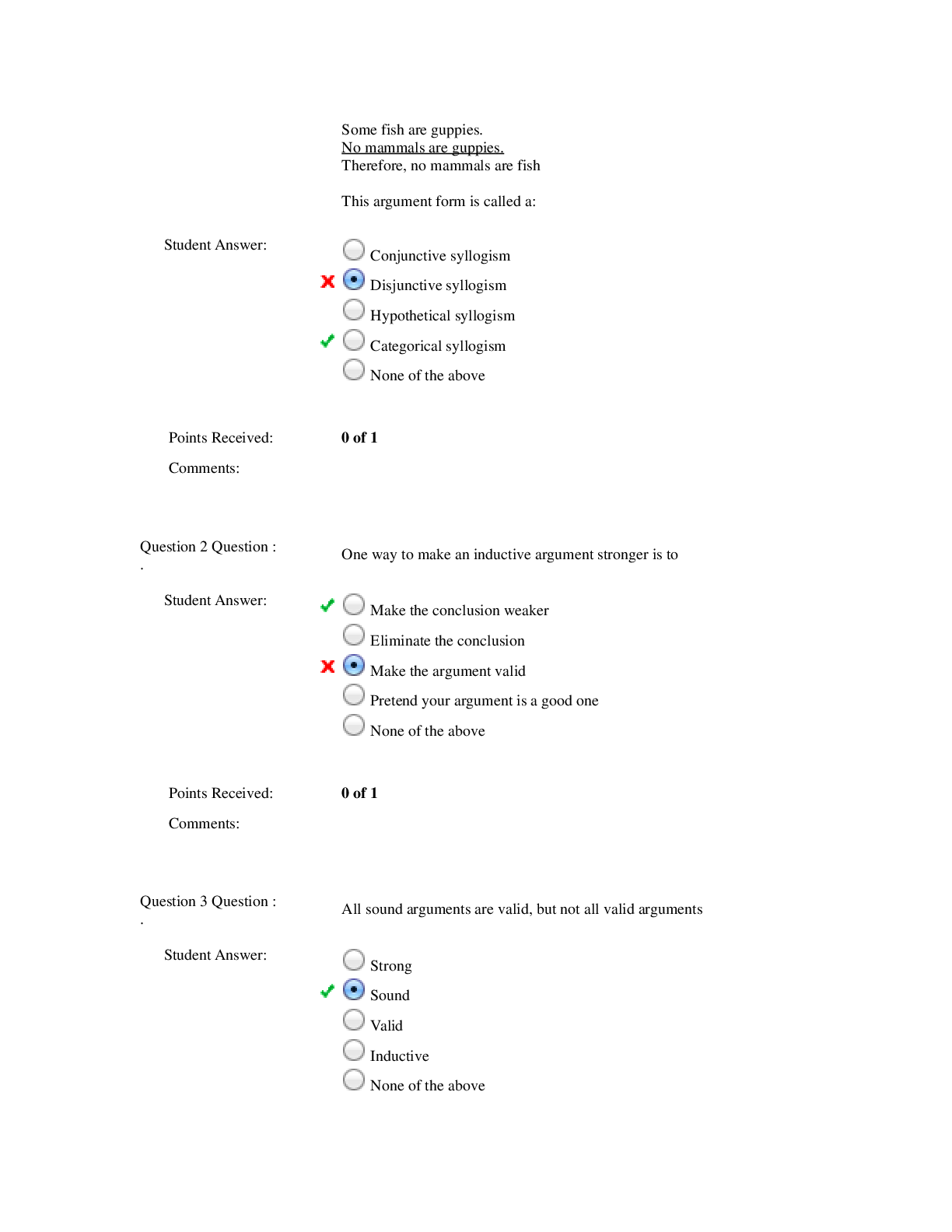

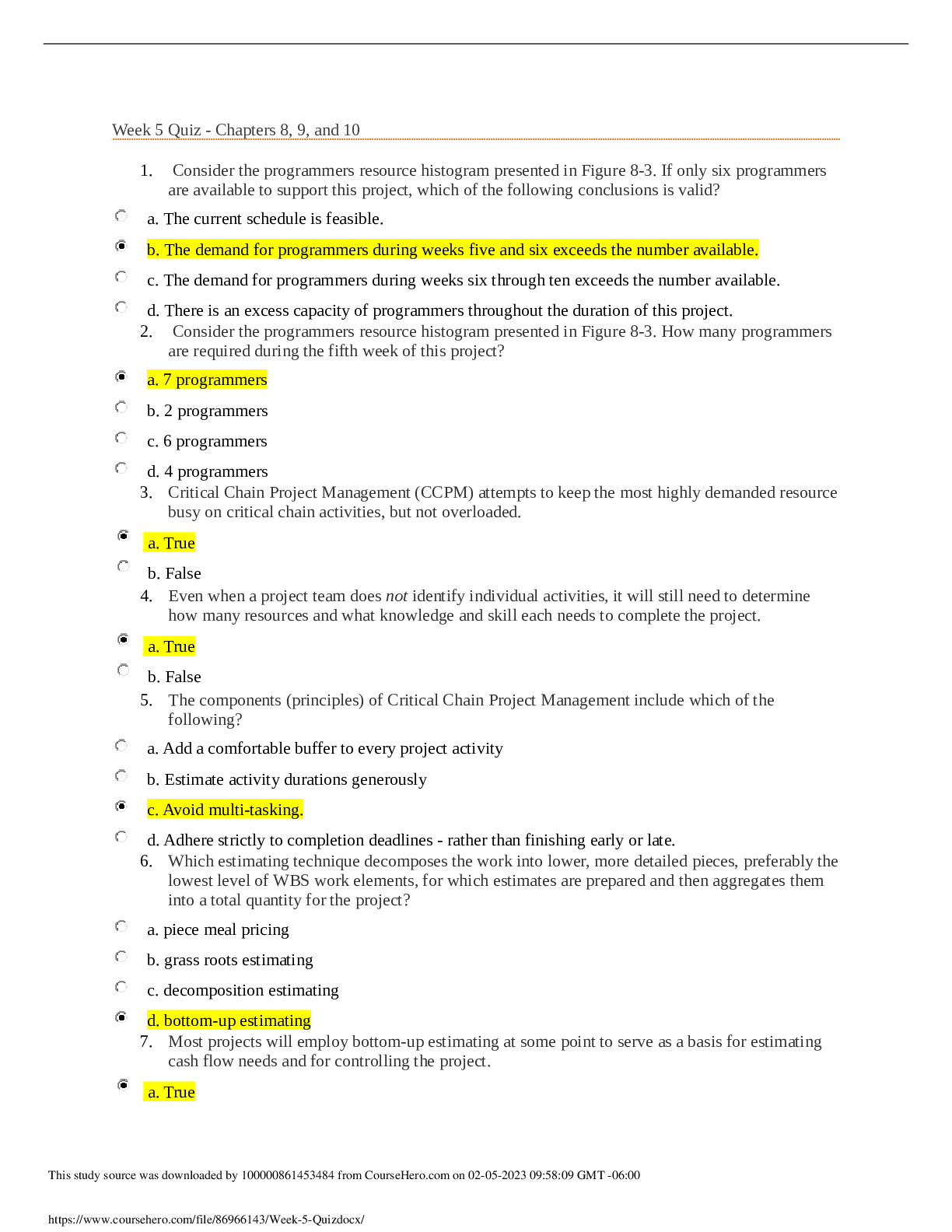
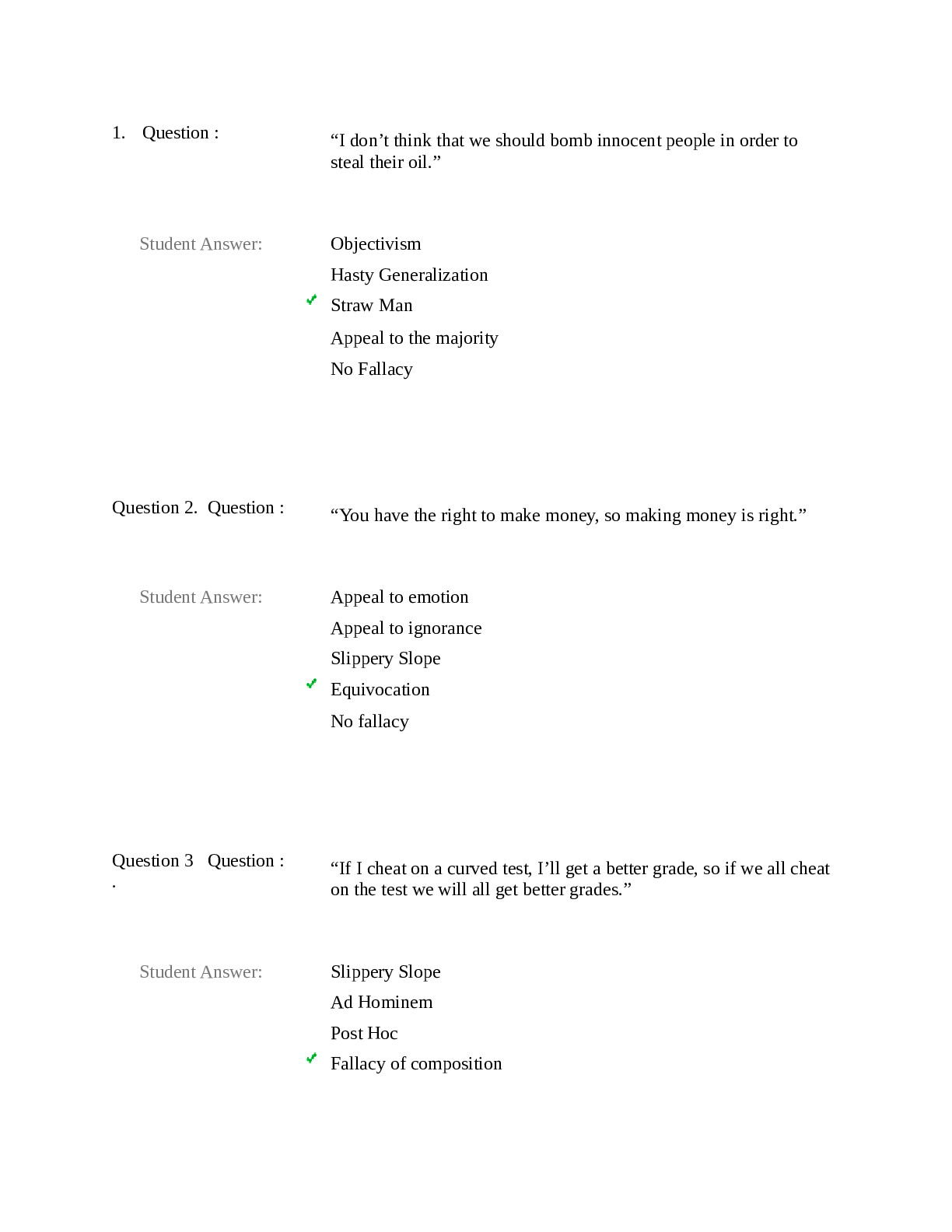
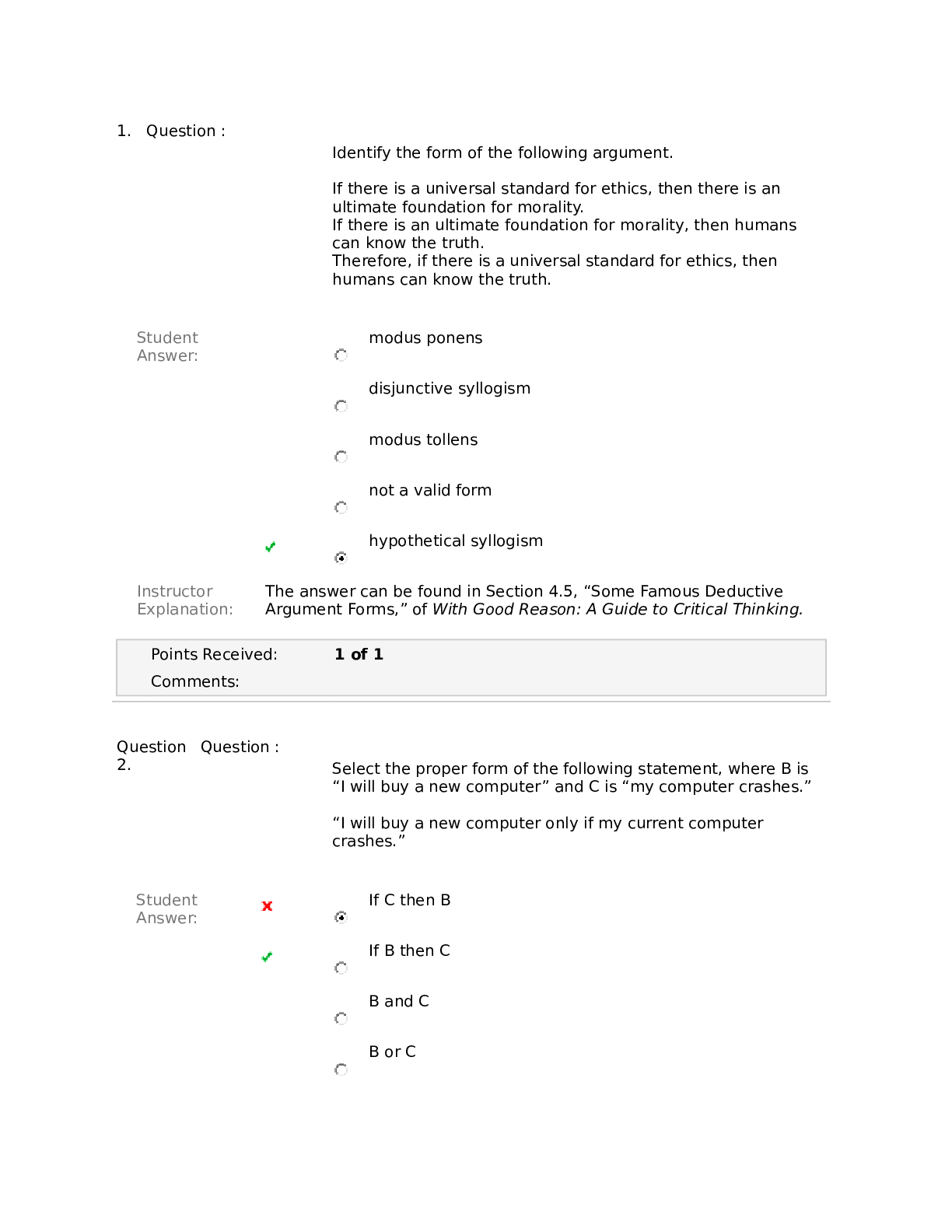
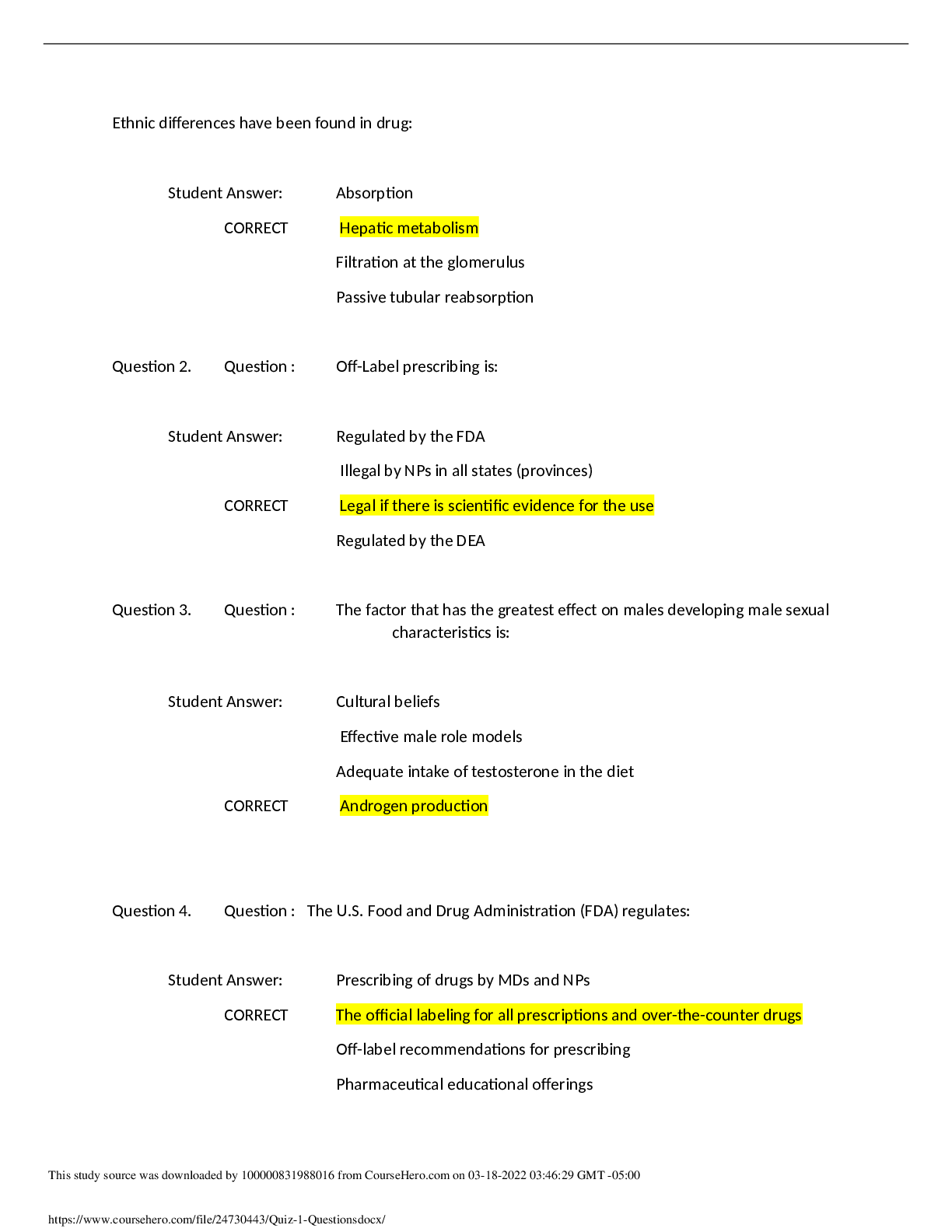
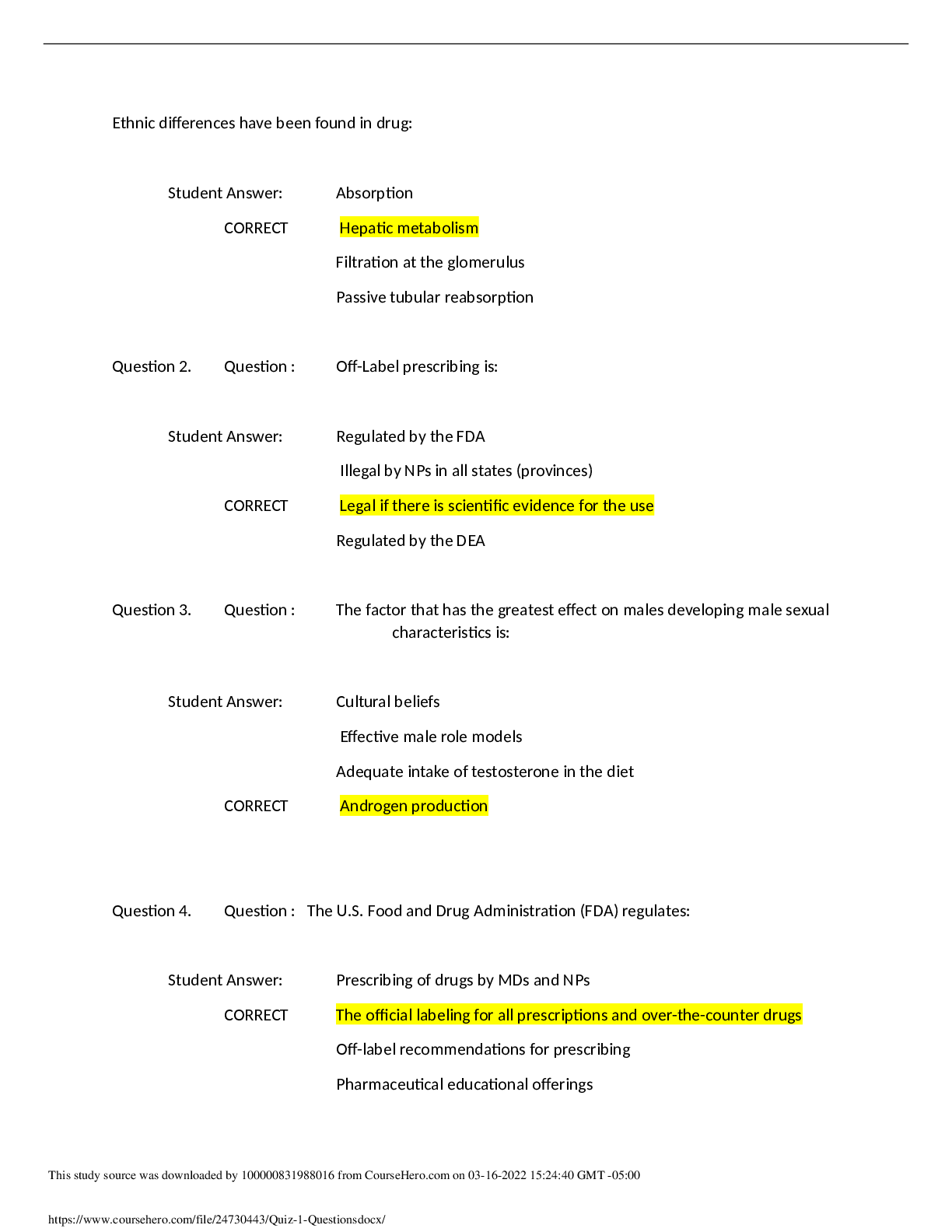



.png)
.png)
.png)

